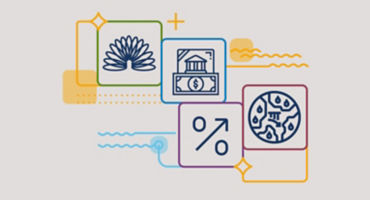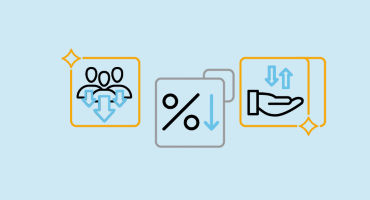Skip to main content
- Funds
The views expressed are those of the author at the time of writing. Other teams may hold different views and make different investment decisions. The value of your investment may become worth more or less than at the time of original investment. While any third-party data used is considered reliable, its accuracy is not guaranteed. For professional, institutional, or accredited investors only.
The topic of stagflation has come front and center for investors as supply-chain issues have persisted longer than expected and collided with unusually aggressive expansionary policy. This has pushed core inflation well above the 20-year range, even as GDP growth and many leading indicators have weakened in recent months. Rising wage growth and spikes in energy prices have poured fuel on the fire, leading to comparisons with the 1970s, a particularly poor environment for real investment returns.
In this paper, I consider the causes of stagflation and what we can learn from previous occurrences, assess the risk of a prolonged period of stagflation today, and outline the potential capital market implications.
Stagflation, which for purposes of this paper I will define as a combination of weakening real growth and rising/high inflation, typically occurs when demand is greater than supply at current prices and supply is unable to grow quickly to meet that demand. Excessive stimulus or money supply increases can be a driver, especially if the output gap (the difference between actual and potential output) is closed so that there is no excess capacity to raise supply and meet the increased demand, forcing prices to rise and ultimately destroy demand.
This process can be prolonged if it is met with additional increases in money supply and nominal incomes, which would at least temporarily preserve demand until prices rise further (assuming capacity doesn’t increase). If, on the other hand, there are no further increases in money supply and nominal incomes, the demand destruction would likely slow economic growth, perhaps to recession levels if negative feedback loops ensue or financial conditions are tightened to combat the inflation.
A second possible cause of stagflation is a shift down in the supply curve of the economy caused by an exogenous shock, such as the OPEC embargo or a currency crisis (which would cause the cost of imported goods to increase with no increase in demand). The severity and persistence of the shock, along with the policy response, will tend to determine whether the result is a short bout of inflation followed by a slowdown or recession, or a longer-lasting stagflationary period in which…
To read more, please click the download link below.

How to nurture a growth mindset in a higher-yielding landscape
In a higher-yield world, can fixed income deliver meaningful growth? John Mullins, Supriya Menon and Alex King explore how high-yield bonds may offer a powerful opportunity for growth - as well as a cushion against uncertainty.

US regional banking sector update
We explore how banking regulation and legislation could impact US regional banks, including highlighting the potential for M&A activity and for dispersion to drive long/short opportunities.
Chair Powell maintains optionality
Fixed Income Analyst Caroline Casavant shares what she thinks matters most for investors in light of the latest interest-rate hike from the Fed.
FX outlook: Is USD exceptionalism withering away with the Fed hiking cycle nearing an end?
Discover the status of the USD today, learn where the greenback may be headed going forward, and understand why.

Global high yield: Attractive entry points could soon emerge
Fixed Income Portfolio Manager Konstantin Leidman shares his outlook for high-yield fixed income for the rest of this year and beyond.
Did the Fed just make a policy error?
Did the Fed just make a policy error? All things considered, Fixed Income Portfolio Manager Jeremy Forster thinks the answer is yes. Learn why and what the implications could be.
Three macro assumptions that could be just plain wrong
Fixed Income Portfolio Manager Brij Khurana offers his non-consensus take on three entrenched, but potentially flawed, beliefs in today's market environment.
Macro risks to watch in this rapidly oscillating global cycle
Macro Strategist John Butler explores the two key questions he believes macro investors should focus on in the current volatile environment.
Financial stability versus inflation: The Fed’s balancing act has gotten much trickier
The Fed’s policy calculus has clearly changed somewhat over the past few weeks but the central bank may not be done hiking rates just yet, says Fixed Income Portfolio Manager Jeremy Forster.

China’s economy: Poised to exceed expectations in 2023
With the bar set so low for China's economy, Macro Strategist Santiago Millan thinks it won't take much for an upside surprise in 2023.

2023: The year of disinflation for the US economy
In the coming year, US Macro Strategist Juhi Dhawan expects to see inflation begin to decline, the economy adjust to higher interest rates, and labor markets feel the pain of restrictive Fed policy.
URL References
Related Insights